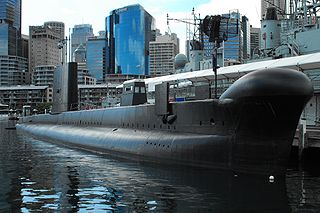
HMAS Onslow is one of six Oberon-class submarines, previously operated by the Royal Australian Navy (RAN). The submarine was named after the town of Onslow, Western Australia, and Sir Alexander Onslow, with the boat's motto and badge derived from Onslow's family heritage. Ordered in 1963, Onslow was laid down at the end of 1967 by Scotts Shipbuilding and Engineering Company in Scotland, launched almost a year later, and commissioned into the RAN at the end of 1969.

The Anzac Memorial is a heritage-listed war memorial, museum and monument located in Hyde Park South near Liverpool Street in the CBD of Sydney, Australia. The Art Deco monument was designed by C. Bruce Dellit, with the exterior adorned with monumental figural reliefs and sculptures by Rayner Hoff, and built from 1932 to 1934 by Kell & Rigby. This state-owned property was added to the New South Wales State Heritage Register on 23 April 2010.

HMAS Sydney was a Chatham-class light cruiser of the Royal Australian Navy (RAN). Laid down in 1911 and launched in 1912, the cruiser was commissioned into the RAN in 1913.
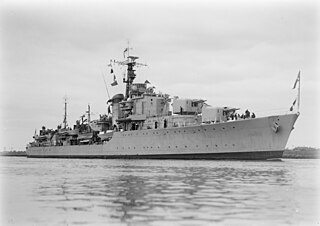
HMAS Anzac (D59) was a Battle-class destroyer of the Royal Australian Navy (RAN). Named after the Australian and New Zealand Army Corps, the destroyer was commissioned in 1951. The ship served on two tours of duty during the Korean War, and attempts to distinguish herself from British ships led to the practice of red kangaroo symbols on Australian warships. During 1956, Anzac served during the Malayan Emergency. In 1960, a malfunction in the destroyer's gun direction equipment caused Anzac to fire directly on sister ship HMAS Tobruk during a gunnery exercise, with Tobruk left unrepairable. In 1961, the destroyer was reclassified as a training vessel. Anzac remained in service until 1974, and was sold for breaking a year later.

HMAS Anzac was a Parker-class destroyer leader that served in the Royal Navy and the Royal Australian Navy (RAN). Launched in early 1917 and commissioned into the Royal Navy, Anzac led the 14th Destroyer Flotilla of the Grand Fleet during the First World War. In 1919, she and five other destroyers were transferred to the RAN, with Anzac commissioning as an Australian warship in 1920. Except for three visits to New Guinea and one to the Solomon Islands, Anzac remained in southern and eastern Australian waters for her entire career. The destroyer was decommissioned in 1931, sold for scrapping four years later, stripped for parts, then towed outside Sydney Heads and sunk as a target ship in 1936.
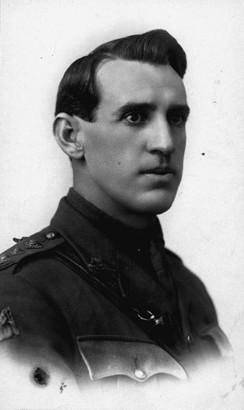
Hugo Vivian Hope Throssell, VC was an Australian soldier in the First World War who was the first Western Australian and only Australian light horseman to receive the Victoria Cross (VC), the highest award for valour in battle that could be awarded to a member of the Australian armed forces at the time.

HMAS Canberra (I33/D33), named after the Australian capital city of Canberra, was a Royal Australian Navy (RAN) heavy cruiser of the Kent sub-class of County-class cruisers. Constructed in Scotland during the mid-1920s, the ship was commissioned in 1928, and spent the first part of her career primarily operating in Australian waters, with some deployments to the China Station.

Between February 1942 and November 1943, during the Pacific War of World War II, the Australian mainland, domestic airspace, offshore islands, and coastal shipping were attacked at least 111 times by aircraft from the Imperial Japanese Navy Air Force and Imperial Japanese Army Air Force. These attacks came in various forms; from large-scale raids by medium bombers, to torpedo attacks on ships, and to strafing runs by fighters.
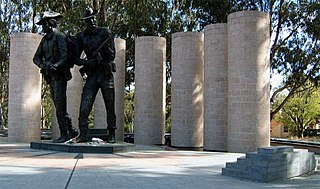
The Australian Army Memorial on Anzac Parade commemorates the service of Australian soldiers.

The Australian National Maritime Museum (ANMM) is a federally operated maritime museum in Darling Harbour, Sydney. After considering the idea of establishing a maritime museum, the federal government announced that a national maritime museum would be constructed at Darling Harbour, tied into the New South Wales state government's redevelopment of the area for the Australian bicentenary in 1988. The museum building was designed by Philip Cox, and although an opening date of 1988 was initially set, construction delays, cost overruns, and disagreements between the state and federal governments over funding responsibility pushed the opening to 1991.
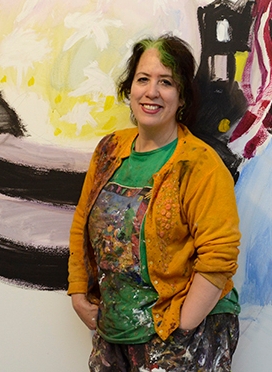
Wendy Sharpe is an Australian artist who lives and works in Sydney and Paris. She has held over 70 solo exhibitions nationally and internationally, been awarded many national awards and artist residencies for her work, and was an official Australian War Artist to East Timor in 1999–2000.
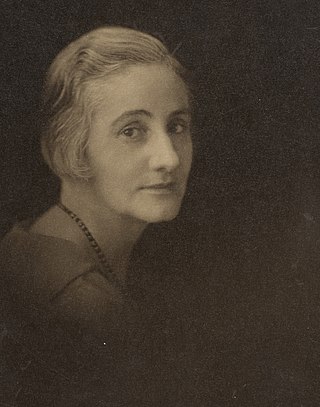
Katharine Susannah Prichard was an Australian author and co-founding member of the Communist Party of Australia.

Judy Cassab, born Judit Kaszab, was an Australian painter.
The following lists events that happened during 1910 in Australia.

Cecilia May Gibbs MBE was an Australian children's author, illustrator, and cartoonist. She is best known for her gumnut babies, and the book Snugglepot and Cuddlepie.

The Sydney Cenotaph is a heritage-listed monument located in Martin Place, in Sydney, New South Wales, Australia. It was designed by Bertram Mackennal and built from 1927 to 1929 by Dorman Long & Co. It is also known as Martin Place Memorial and The Cenotaph. It is one of the oldest World War I monuments in central Sydney. It was added to the New South Wales State Heritage Register on 11 November 2009.
The Gloucester Cup is the common name for three awards of the Australian Defence Force officially called the Duke of Gloucester's Cup, the three awards are presented to the most proficient ship of the Royal Australian Navy (RAN), infantry battalion of the Australian Army, and squadron of the Royal Australian Air Force (RAAF) during the previous year. The awards were created by Prince Henry, Duke of Gloucester in 1946, while he was serving as the Governor-General of Australia, and were first presented in 1947.

Rockingham is a suburb of Perth, Western Australia, located 47 km south-south-west of the city centre. It acts as the primary centre for the City of Rockingham. It has a beachside location at Mangles Bay, the southern extremity of Cockburn Sound. To its north stretches the maritime and resource-industry installations of Kwinana and Henderson. Offshore to the north-west is Australia's largest naval fleet and submarine base, Garden Island, connected to the mainland by an all-weather causeway. To the west and south lies the Shoalwater Islands Marine Park.
Wes Olson is an independent researcher and author based in Perth Western Australia. His work has concentrated on Australian military history during both World Wars.
















